While the Sound Blaster X1 is geared towards individuals looking for a quick and portable means to upgrade their audio, the Sound Blaster X4 presents a more well-rounded solution for better audio. The Sound Blaster X4 retails for S$219.
Unboxing
In the box, you’ll find the following:
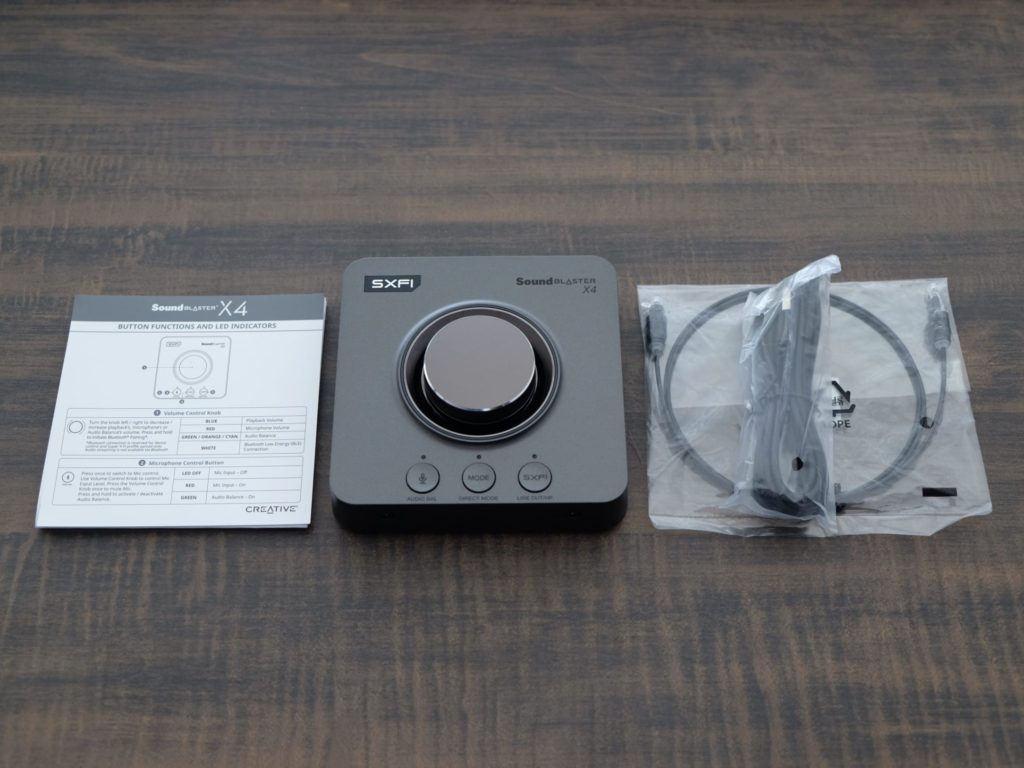
- Sound Blaster X4 USB DAC Amp
- USB-C to USB-A cable (2m)
- Optical Cable (1m)
- User manual
Build quality and design
The Sound Blaster X4 sports a simple squarish design with a big volume knob in the center. The size is actually larger than what I’d imagined it to be. I like the functional design of the Sound Blaster X4, which comes in a modern gunmetal grey compared to a plain black of the X3. Compared to the X3, the top of the device now has the SXFI and Sound Blaster branding aligned on both sides.
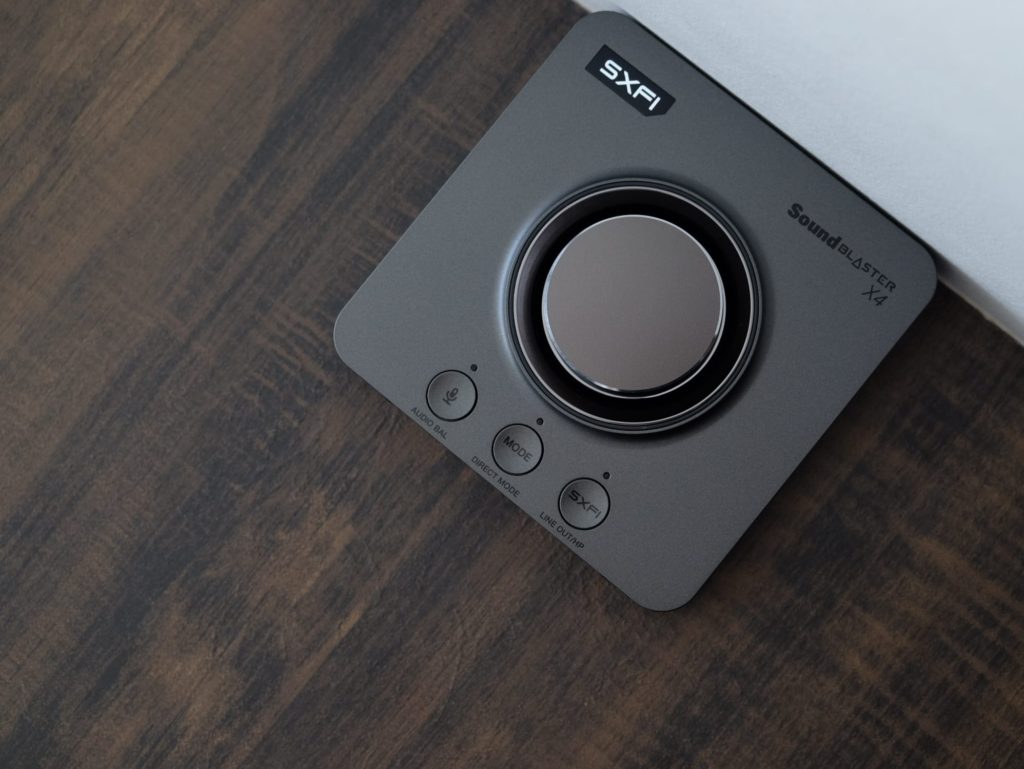
Build quality wise, it is pretty ok. It is made of plastic which has a matte finish to it, though the overall build can feel a little light. The knob does have some wobble to it as well while the buttons on the Sound Blaster X4 feel decent.
Connectivity and controls
Sound Blaster X4 is powered simply by USB-C via your computer or laptop, so thankfully no cumbersome power bricks to deal with. On the back of the Sound Blaster X4, you will find two types of audio output – (1) optical, or (2) four 3.5mm AUX ports to setup sound systems from 2.1 to 7.1.
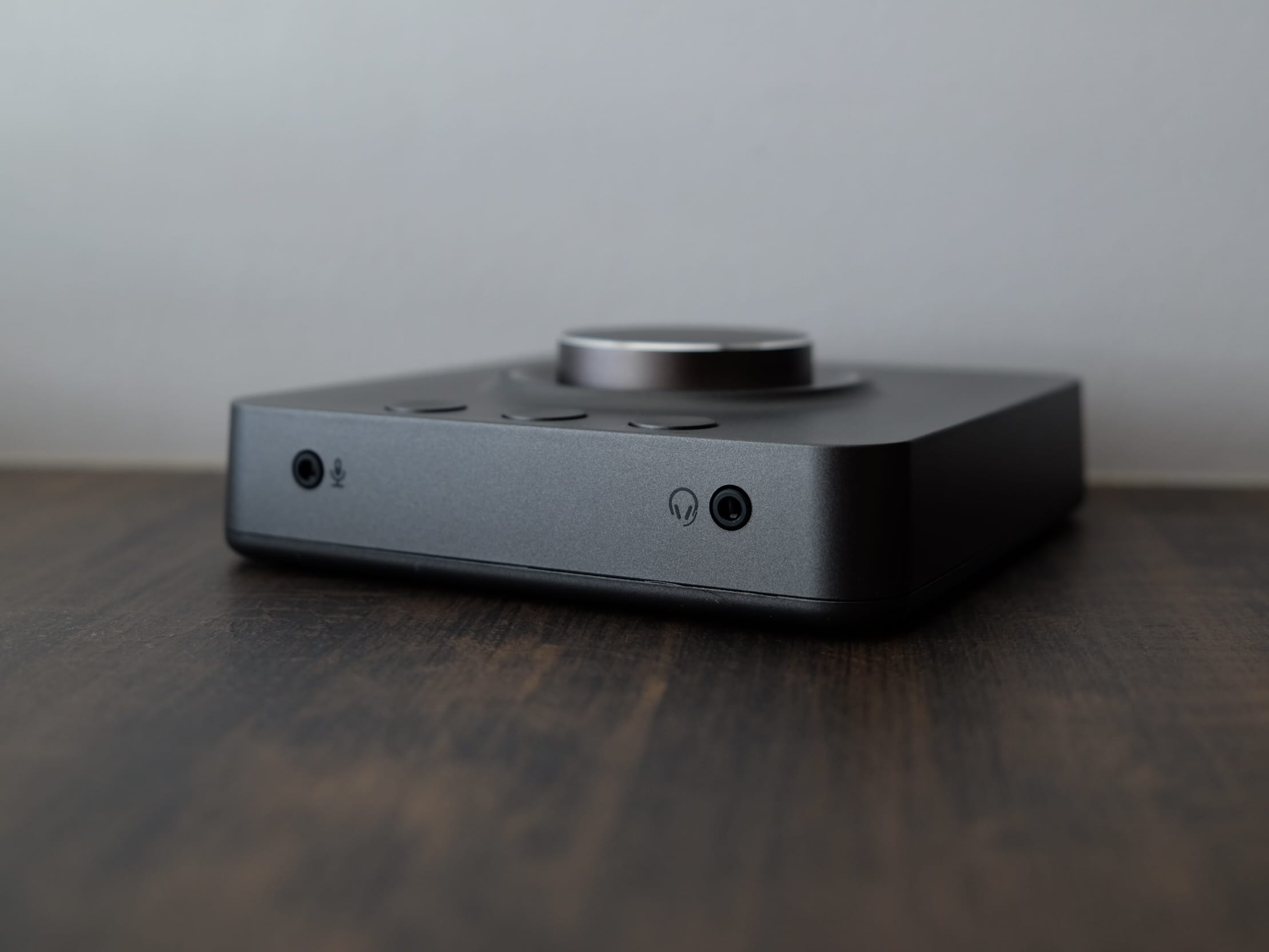
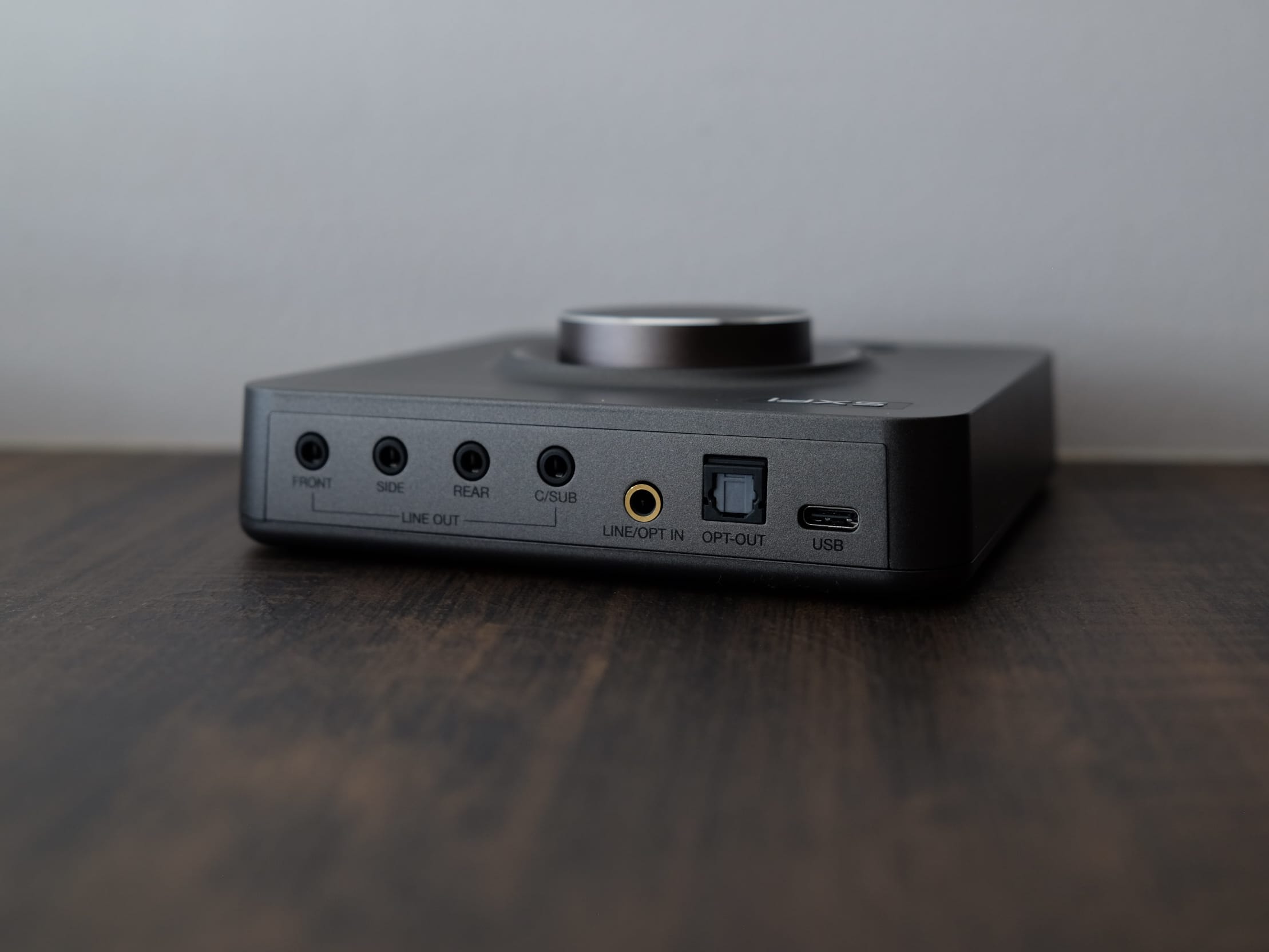
Flipping to the front, you have a 3.5mm headphone jack as well as a 3.5mm microphone input. While it is aesthetically pleasing for each to be located symmetrically on each side, do take note the space between them if you’re using a splitter. The large volume knobs also doubles as a mute button.
Apart from the volume knob there are also three main buttons on the front to unlock a wide array of controls. They are (1) Microphone button, (2) Mode button, and (3) SXFI button. A single tap of the microphone button on the left toggles the control of the volume knob for the microphone. Once switched over, you can increase/decrease the microphone volume input as well as muting it.
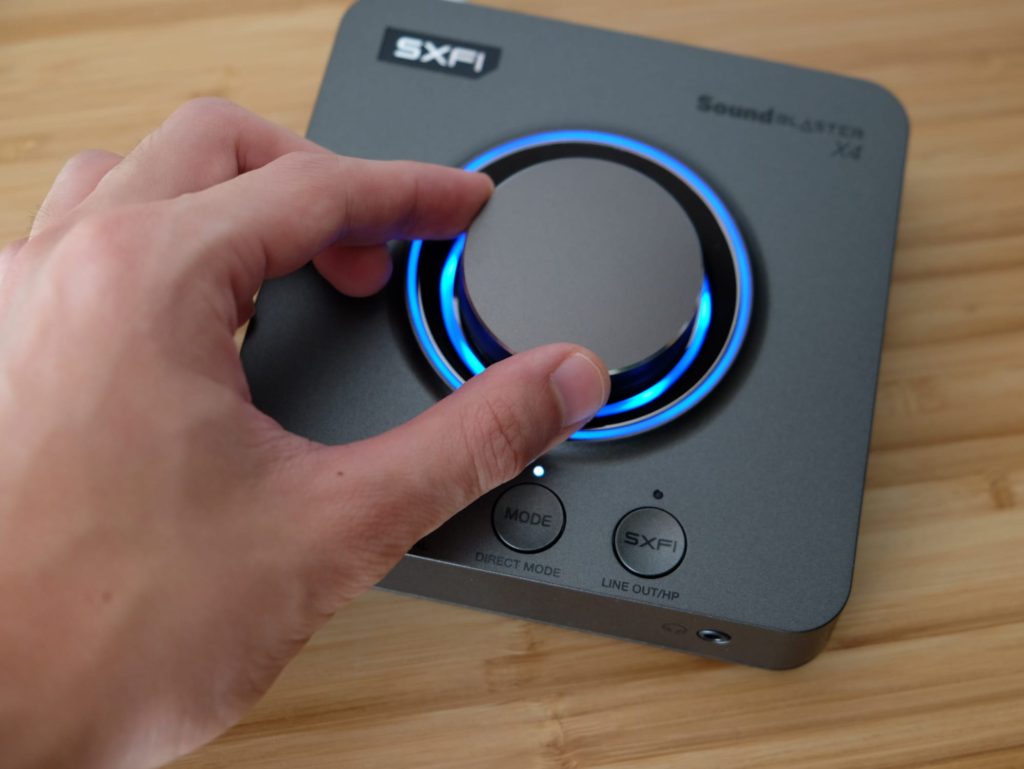
Audio Balance
Pressing and holding the microphone button will allow you to enter Sound Blaster X4‘s Audio Balance feature, which can be visually seen as the light around the knob turns cyan. This feature is likely used in scenarios where you’ll be listening to two different audio outputs such (1) game audio, and (2) Discord chat. For this to work you’ll need to set one of the audio output to the “SPDIF Out” of the Sound Blaster X4. Once you have that setup, you will be able to control volume levels between two audio sources via the knob. A decrease in volume of the “SPFIF Out” will simultaneously increase the other audio. This is useful especially when it comes to gaming where you can adjust both gaming and chat audio on the fly.
Mode button
The middle button is the Mode button which does two things: (1) allow you to cycle through three different EQ modes, and (2) access Direct Mode. By default, the Sound Blaster X4 comes stocked with the below EQ modes:
- Music (White LED)
- Movies (Purple LED)
- Footstep Enhancer (Blue LED)
- EQ for SXFI Mode (Green LED)
The EQ can modified via the Creative App to replace the stock settings. This can be helpful as a single button press allows you to get from an EQ tuned for movies to one tuned for games to help you play better.
The other mode is called Direct Mode, which is triggered via a long press on the Mode button. Direct Mode turns off all processing done in the Sound Blaster X4 and play the audio like what the media intended. In other words, it removes all sound adjustments you have set via the Sound Blaster X4.
Bluetooth control
One last neat feature to call out here would be the ability to adjust settings on the Sound Blaster X4 using Bluetooth on your phone. Bluetooth here is strictly meant for changing the settings, which I find will be useful if you plan to use the Sound Blaster X4 on your PS4 or PS5.
Super X-Fi experience (SXFI)
The rightmost button is dedicated to the Creative’s Super X-Fi feature. If you’re not acquainted with Creative’s Super X-Fi technology yet, I have a summary of my experiences with it on the Sound Blaster X1. Super X-Fi is designed to intelligently recreate your audio as though you are listening with a surround sound system. My thoughts are the same as before – sound imaging is generally improved with elements of the audio sounding further than default. Its effective use cases vary on personal preferences.
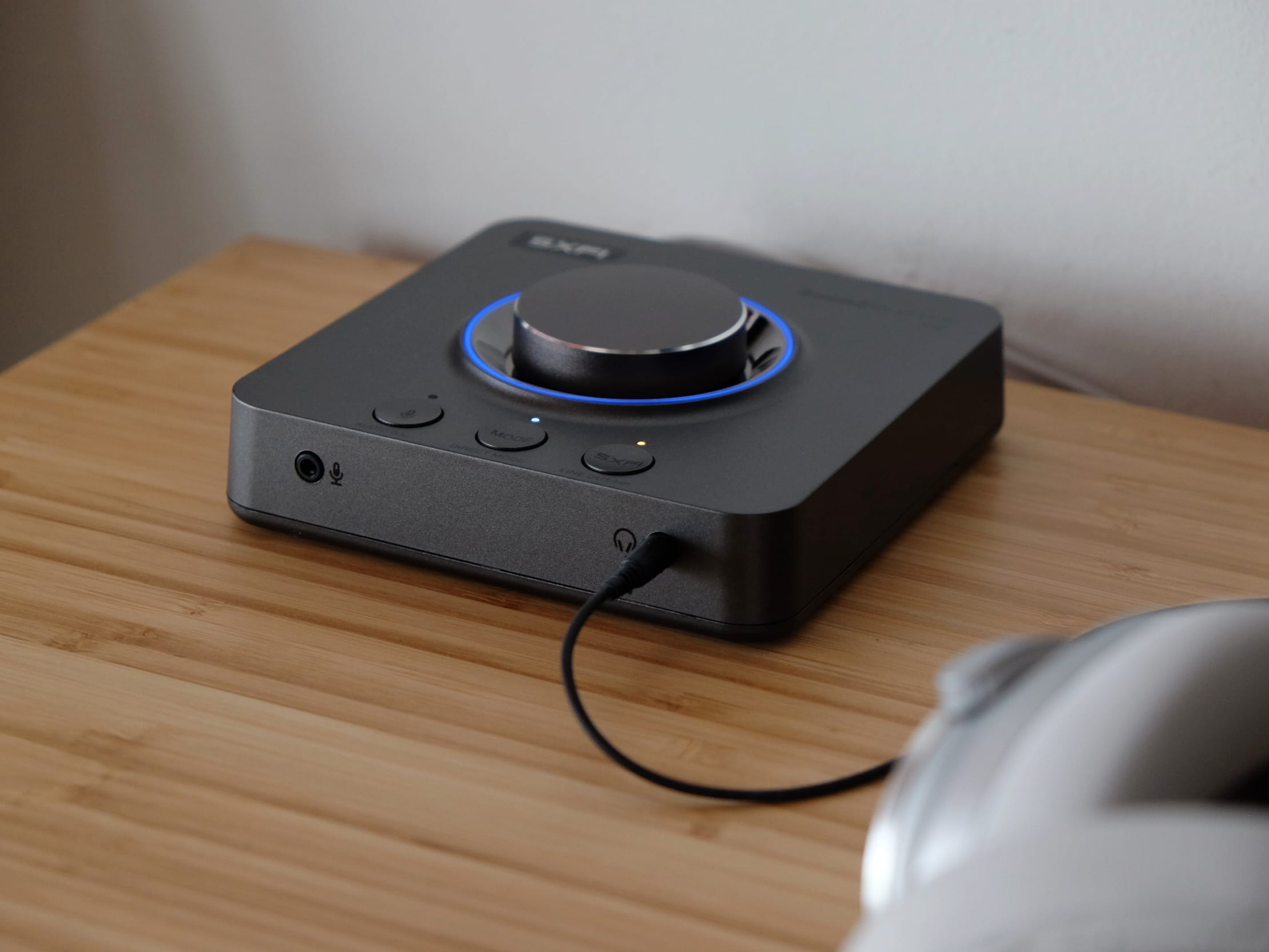
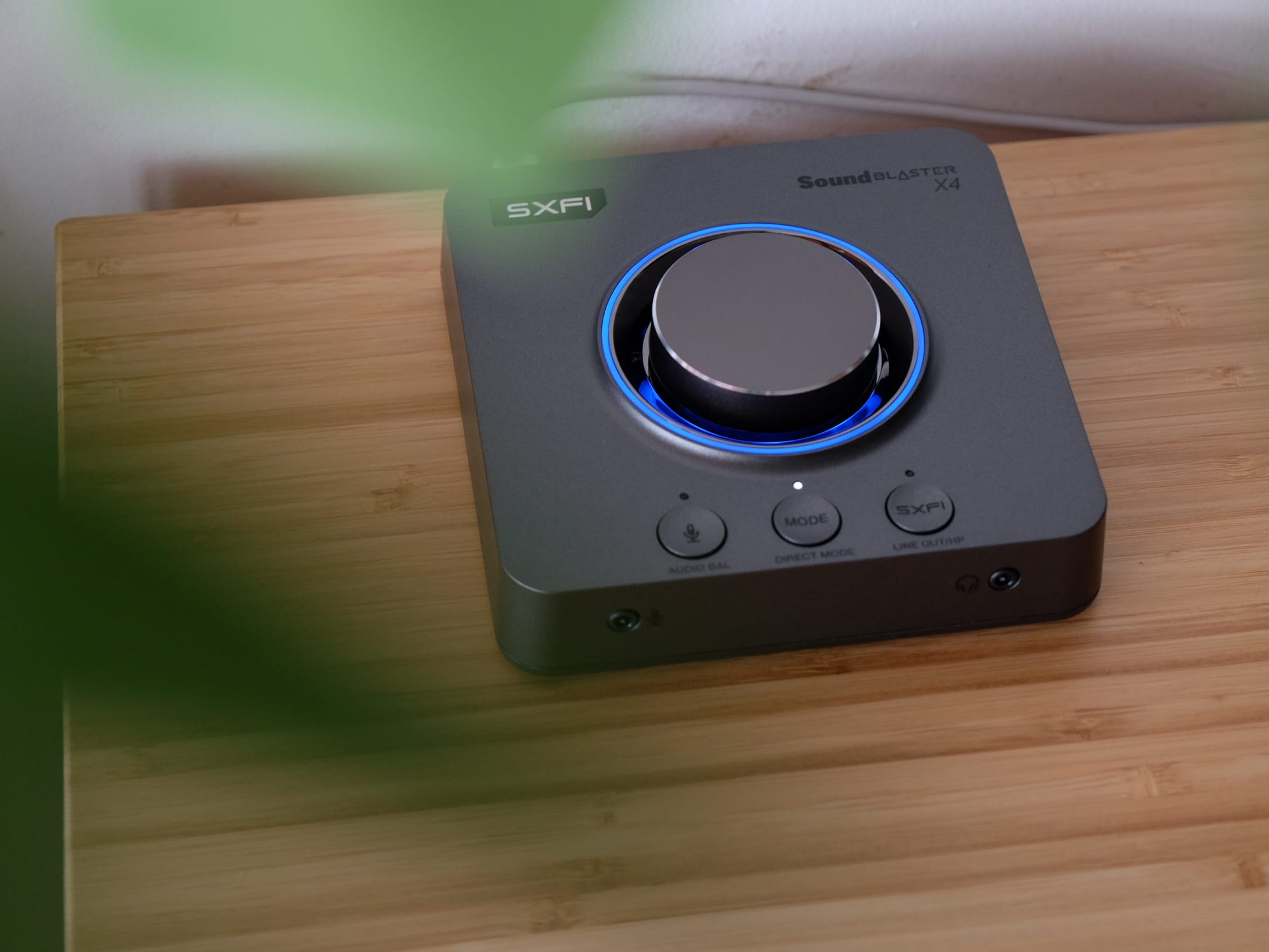
Audio is a very personal thing. What sounds good to me might not sound good to you. Allow me to summarise my experience with Super X-Fi. Music is a hit-or-miss for me. I find generic pop songs can sound weird with an odd tone to it, but you can experiment on which type of music works well with Super X-Fi. I found that Super X-Fi works quite well with instrumental tracks, and particularly live music recordings as it does sound very similar to what you would hear if you were in that concert.
Movies is definitely an area where Super X-Fi shines. Watching action scenes with headphones on can sometimes feel tiring because the loud impactful scenes blast through the speakers right to your ears. Having Super X-Fi helps to open up the audio, making the content feel more immersive, akin to watching it in the cinema.
Gaming with Super X-Fi is also a fun experience, but like music, it depends on the type of game that you are playing. Open world games such as GTA and Genshin Impact works well as you get the expansive feel of the world. Games where directional cues are important such as Valorant may not feel as accurate as the volume of the cues is usually softer than without Super X-Fi.
Sound and microphone quality
With the Sound Blaster X4, the audio output from both speaker out or headphones are louder and have more clarity. It’s much easier to tell the the difference when listening on headphones. Overall, you can expect better dynamic range, low distortion even if you cranking up the volume. Another good thing to point out is that I did not notice any hiss in the background when no music is playing. If you having been using the default 3.5mm jack from your laptop or computer, having the Sound Blaster X4 is instantly provides an upgrade in your audio experience.
As for microphone input, it is pretty good. And if you have the time to tinker around with the different presets in the CrystalVoice feature on the Creative App, it can help to improve the overall output as well. Recording output is clear and natural, with good levels of depth that sounds natural. The noise floor is low as well.
Creative App software
As aforementioned in the controls overview, you can adjust the stock EQ via the Creative App. But there are many more features to customize the Sound Blaster X4. The smaller Sound Blaster X1 also has support for the Creative but the Sound Blaster X4 offers slightly more features in the app than the X1.
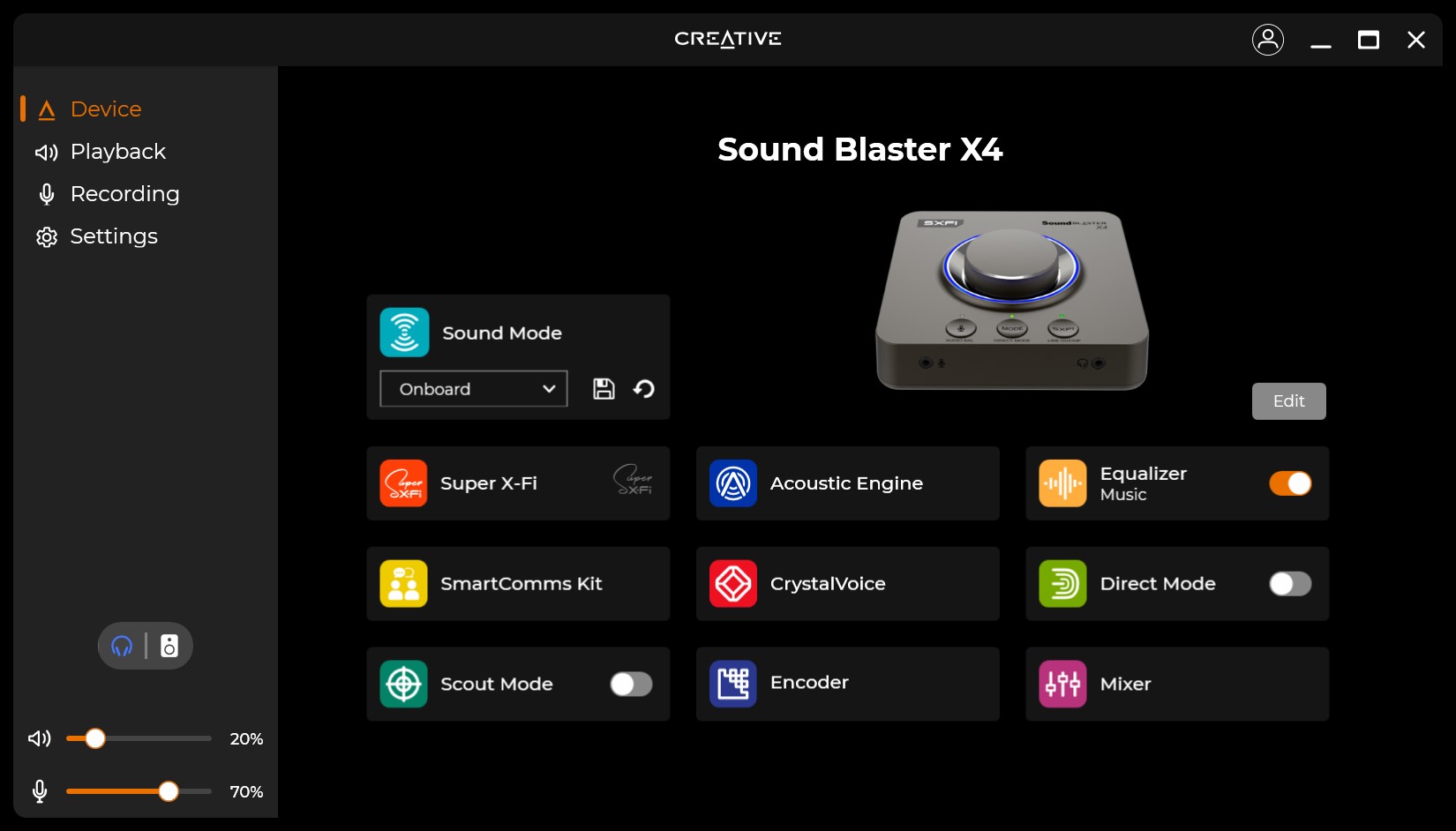
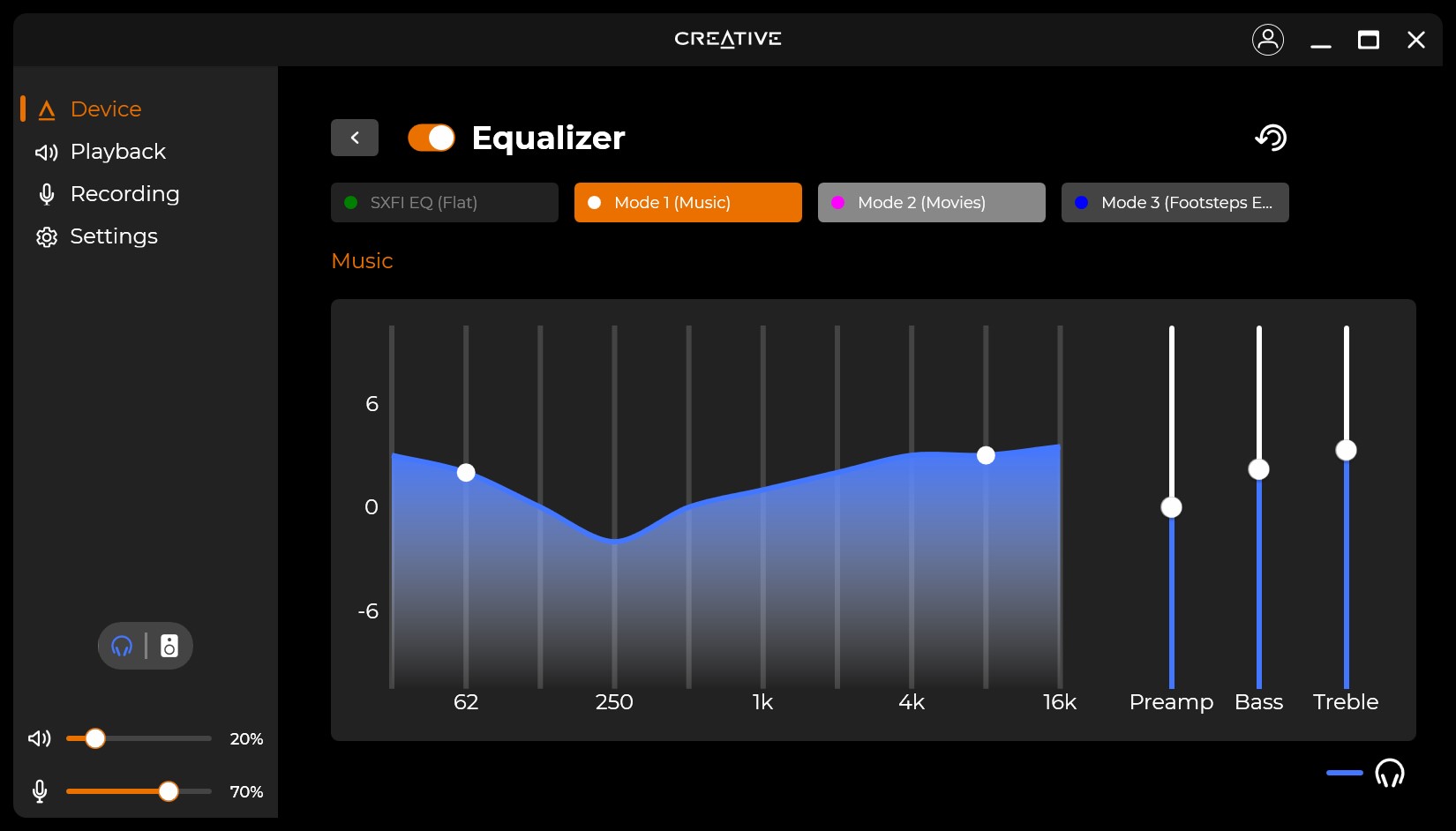
To start, you can customize up to 3 EQs and switch them via the Mode button but the X1 only has one slot of EQ. The adjustments made to the EQs are saved onboard the device so you do not have to change any settings if you use it on another device. Like on the Sound Blaster X1, the Acoustic Engine offers quick switches you can turn on and adjust the intensity to get quick adjustments. Dialog+ is quite good at bringing out vocals especially in videos where there are a lot of background noise going on.
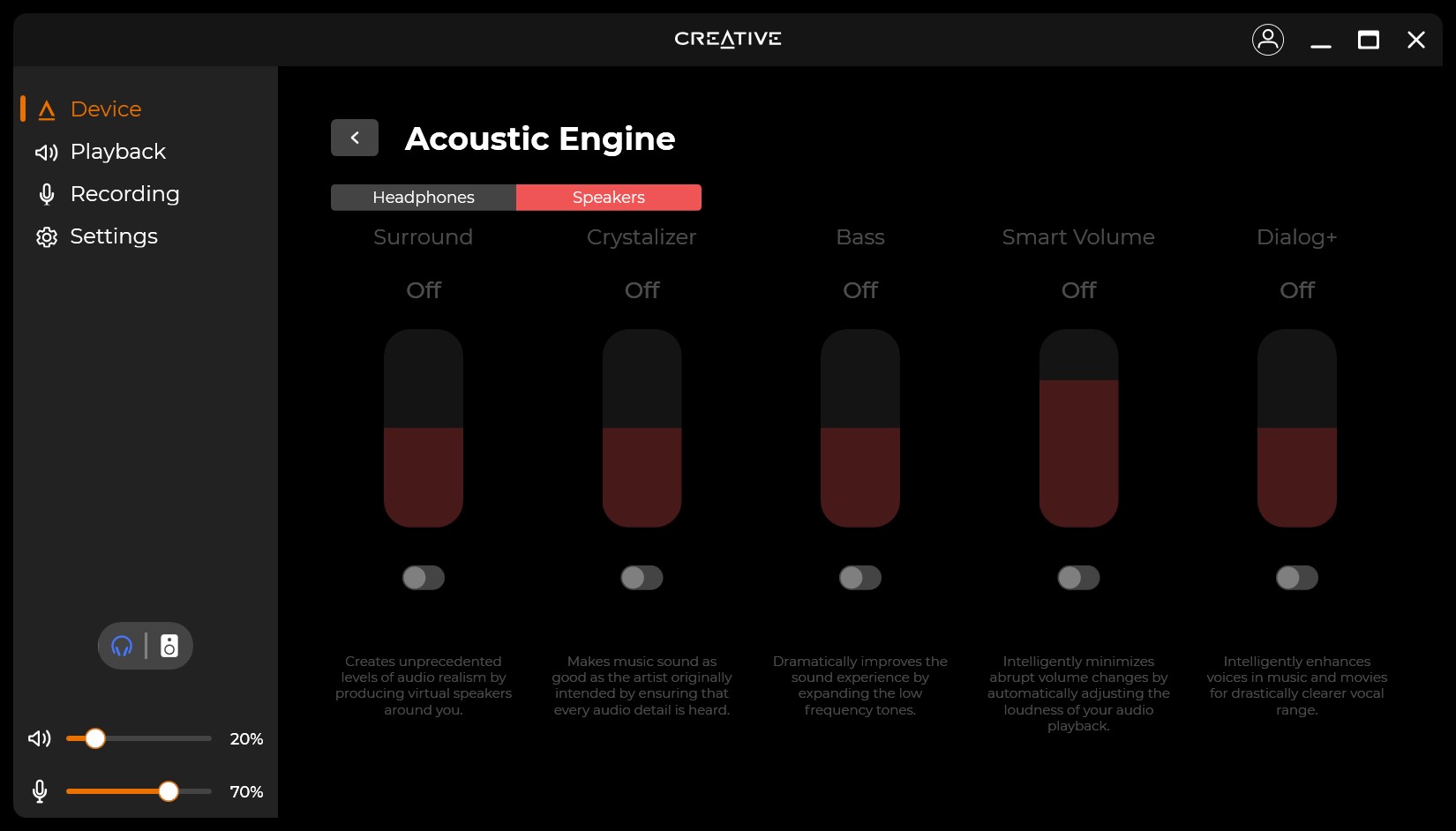
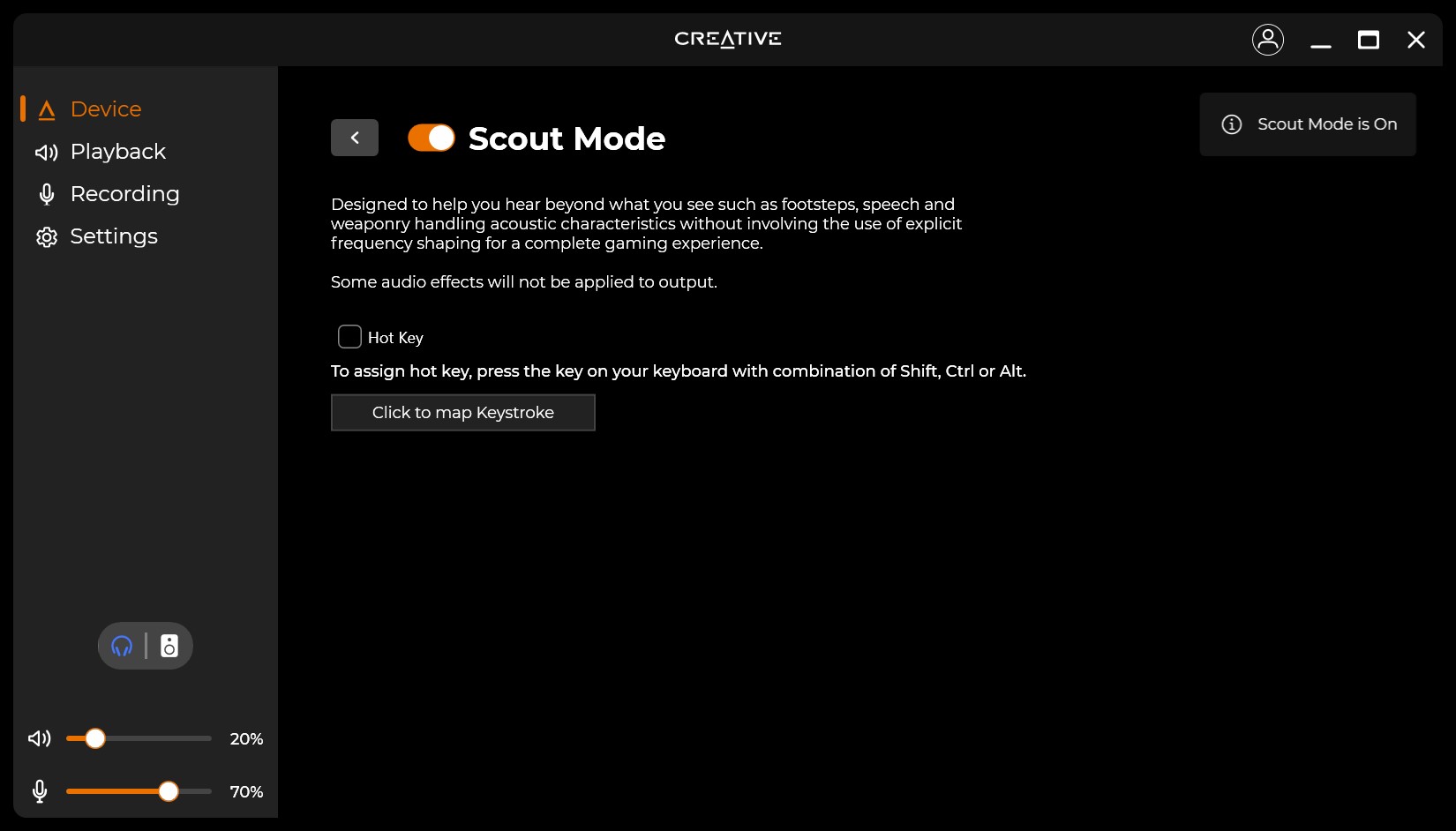
SmartsComm Kit and CrystalVoice are pretty useful for improving your call quality especially if say you have kids playing in the background, or the TV is playing. The microphone equalizer in CrystalVoice allows you to tune your mic output with different presets. VoiceDetect in the SmartsComms kit can be useful to auto-mute, though I found it to be most reliable in a controlled setting with less background noise.
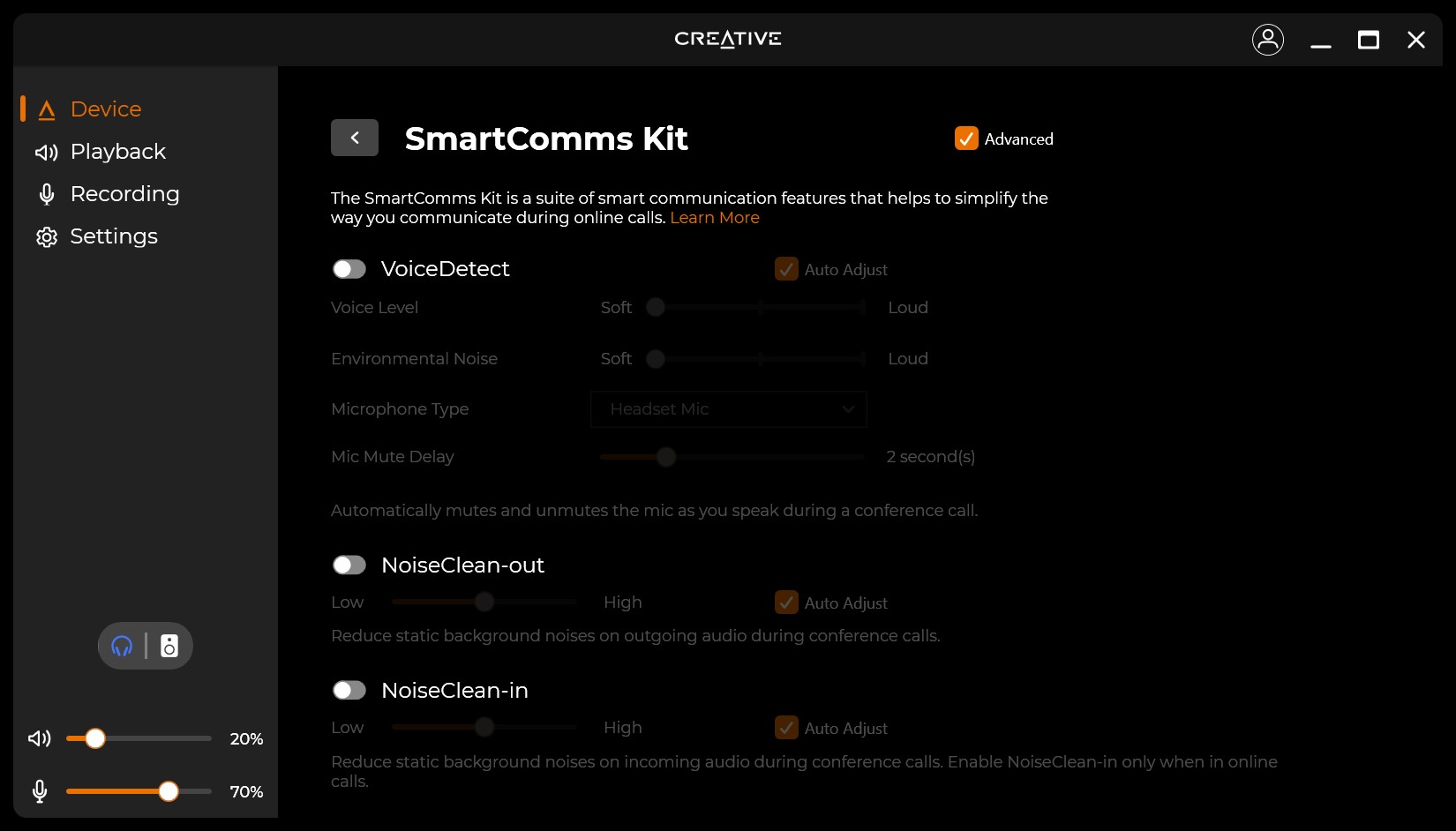
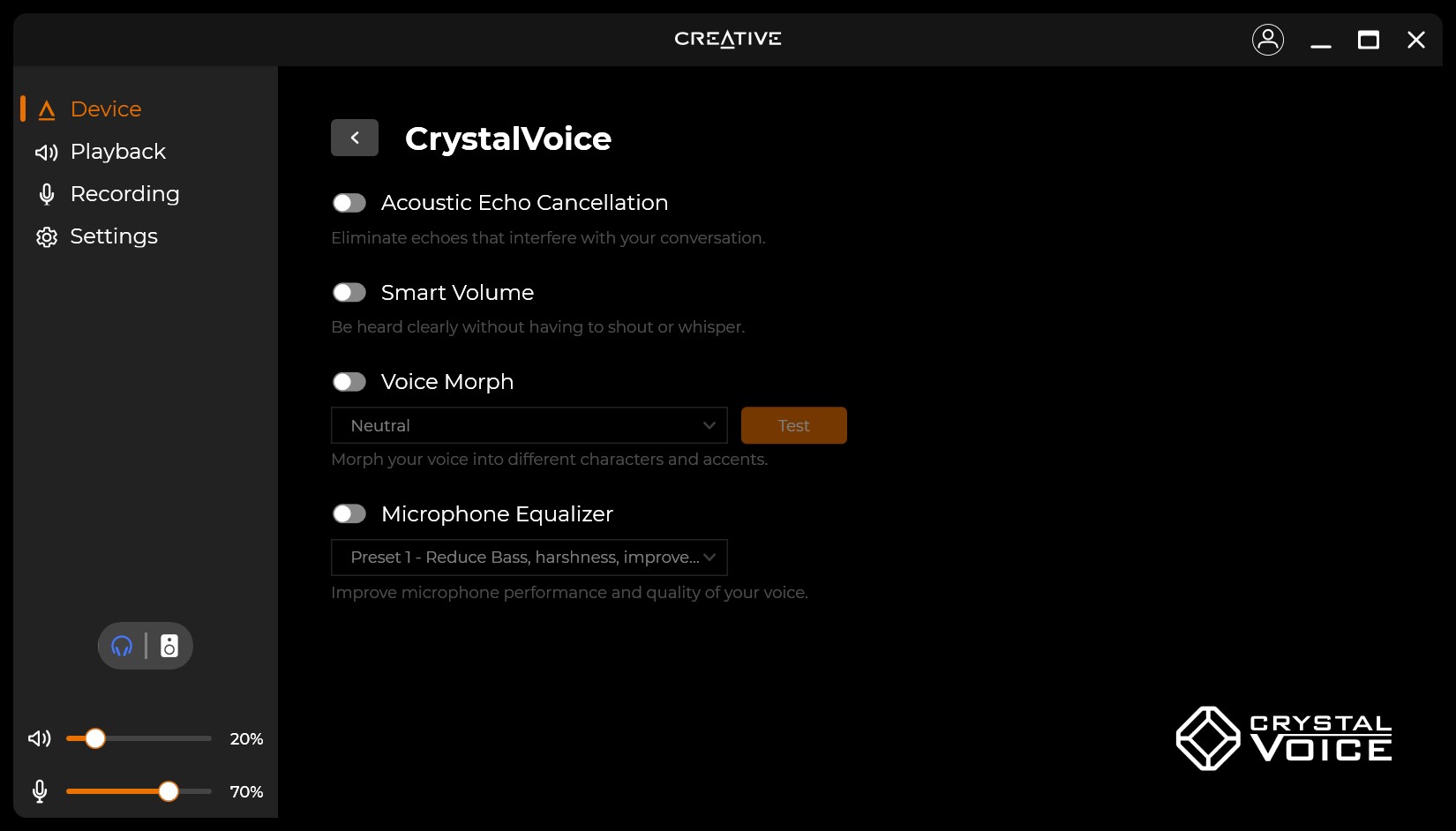
Apart from audio effects, you also have control to the levels and quality of your inputs and outputs. It is really where you can tinker and fine tune the device to how you’d optimally use it.

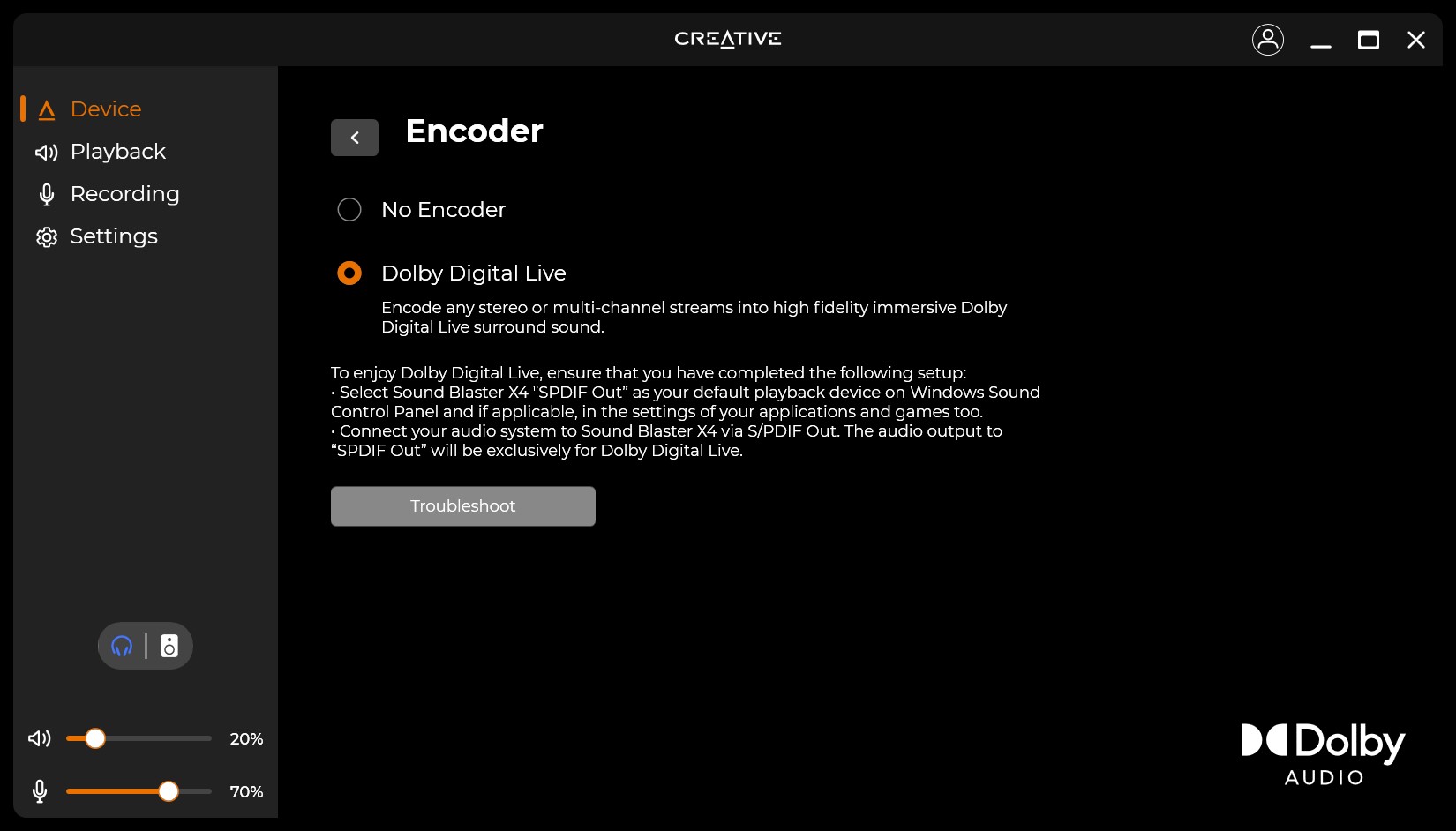
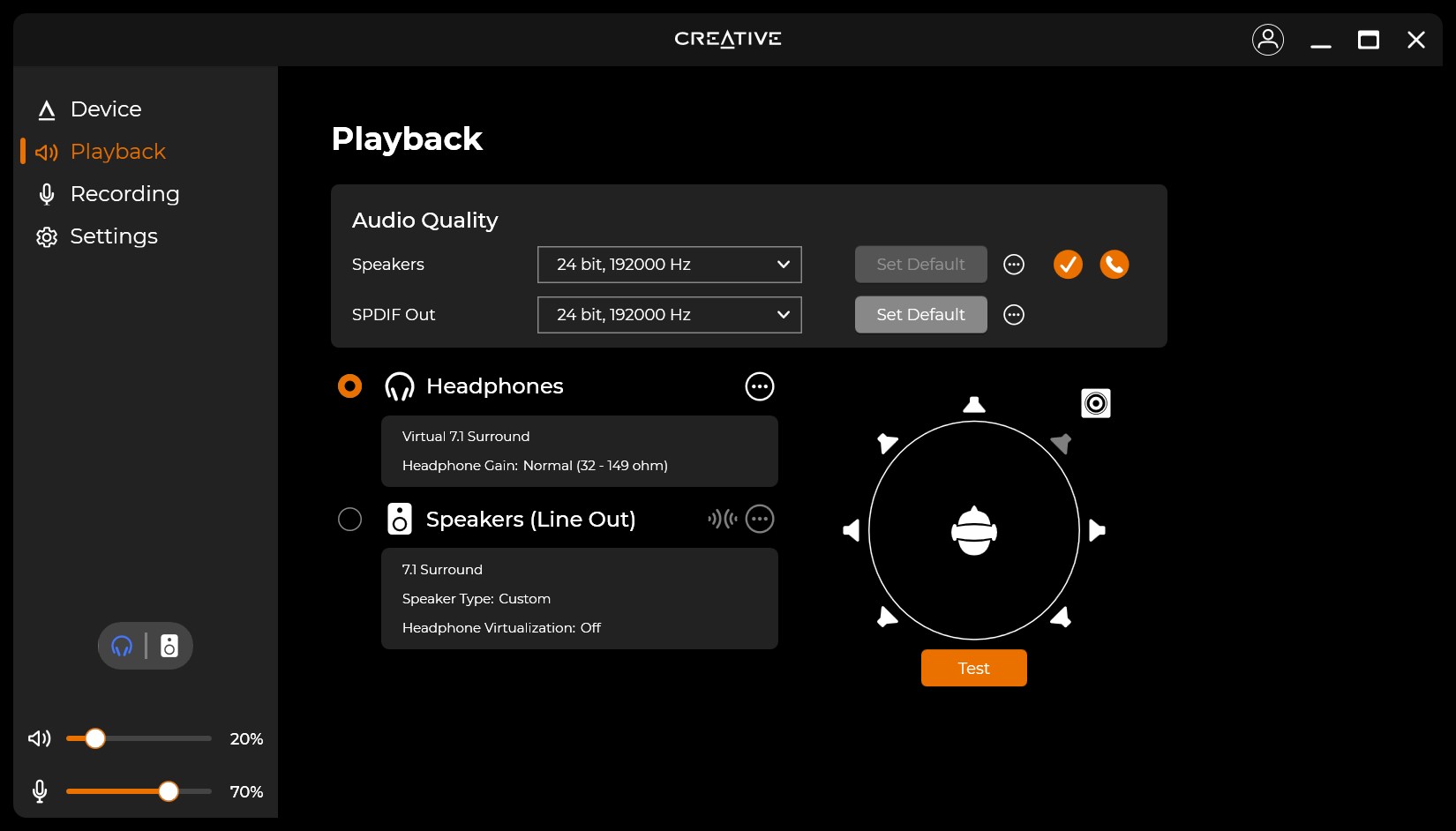
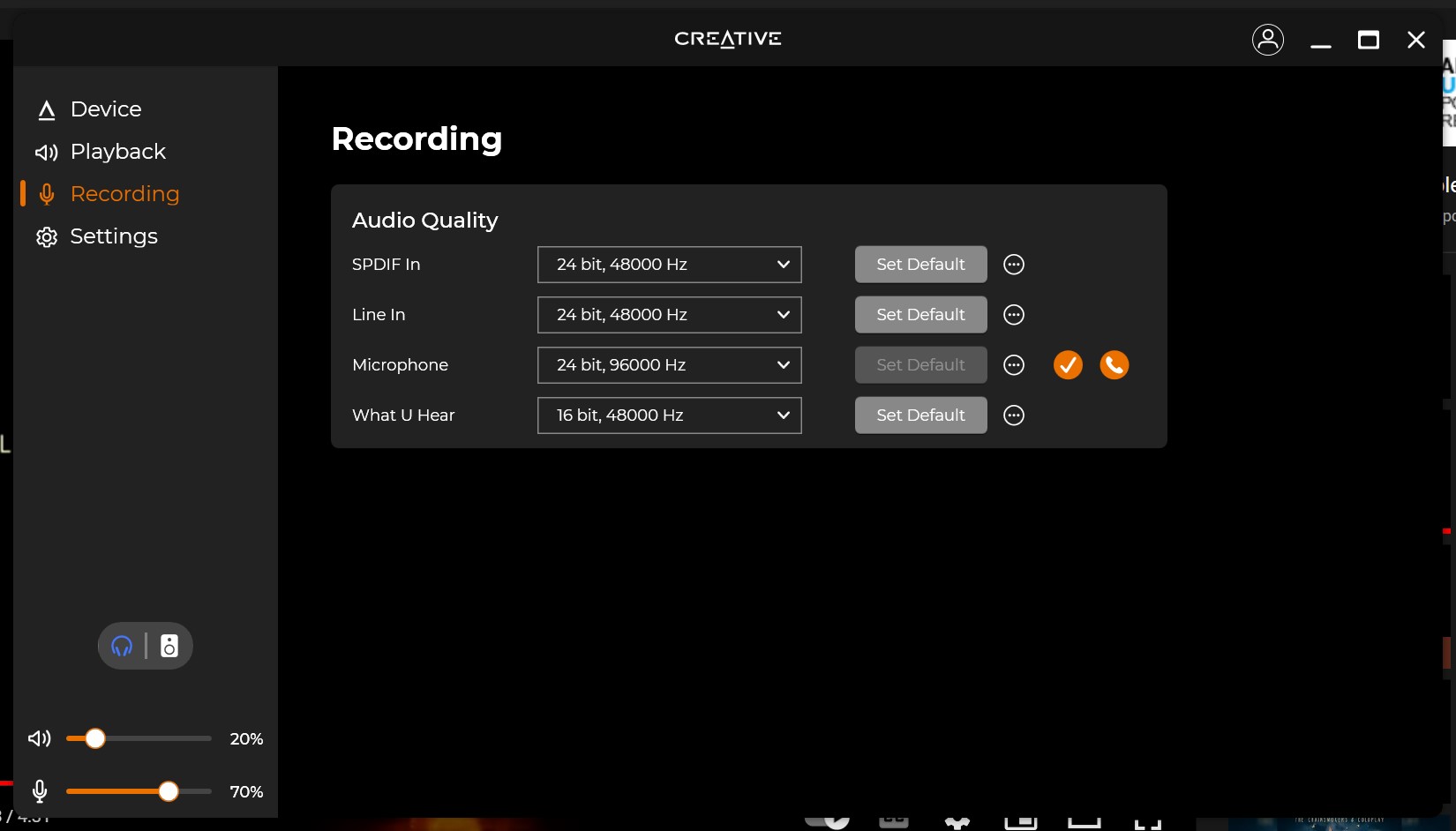
Conclusion
While the Sound Blaster X1 is a portable audio enhancement tool, the Sound Blaster X4 stands its ground as a multimedia powerhouse. It offers solutions and improvements to a wide variety of use cases and audiences. Be it listening to music, watching movies, playing games, streaming, or even for work, there is something the Sound Blaster X4 has to offer to improve that experience. At S$219, the Sound Blaster X4 is a considerable addition to your setup especially if you do consume audio regularly.
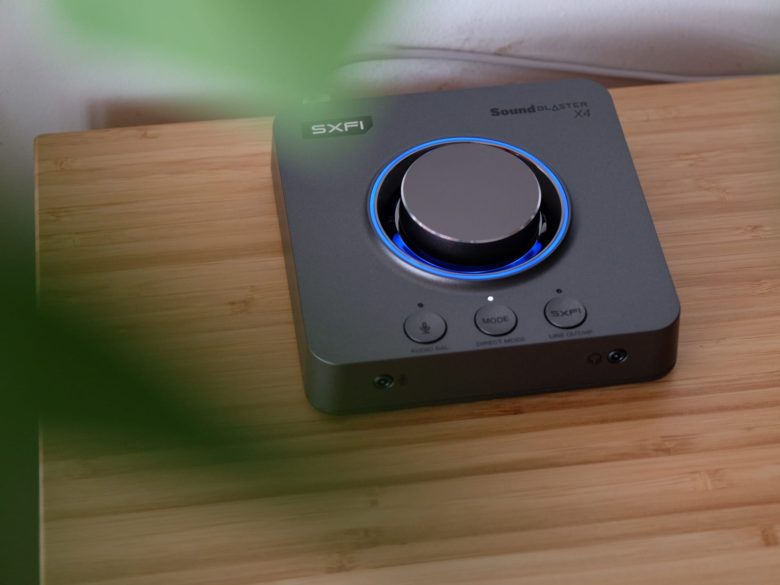

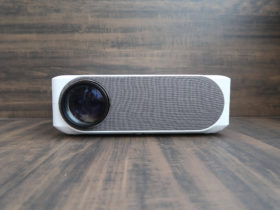

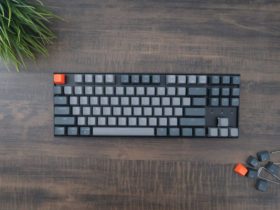

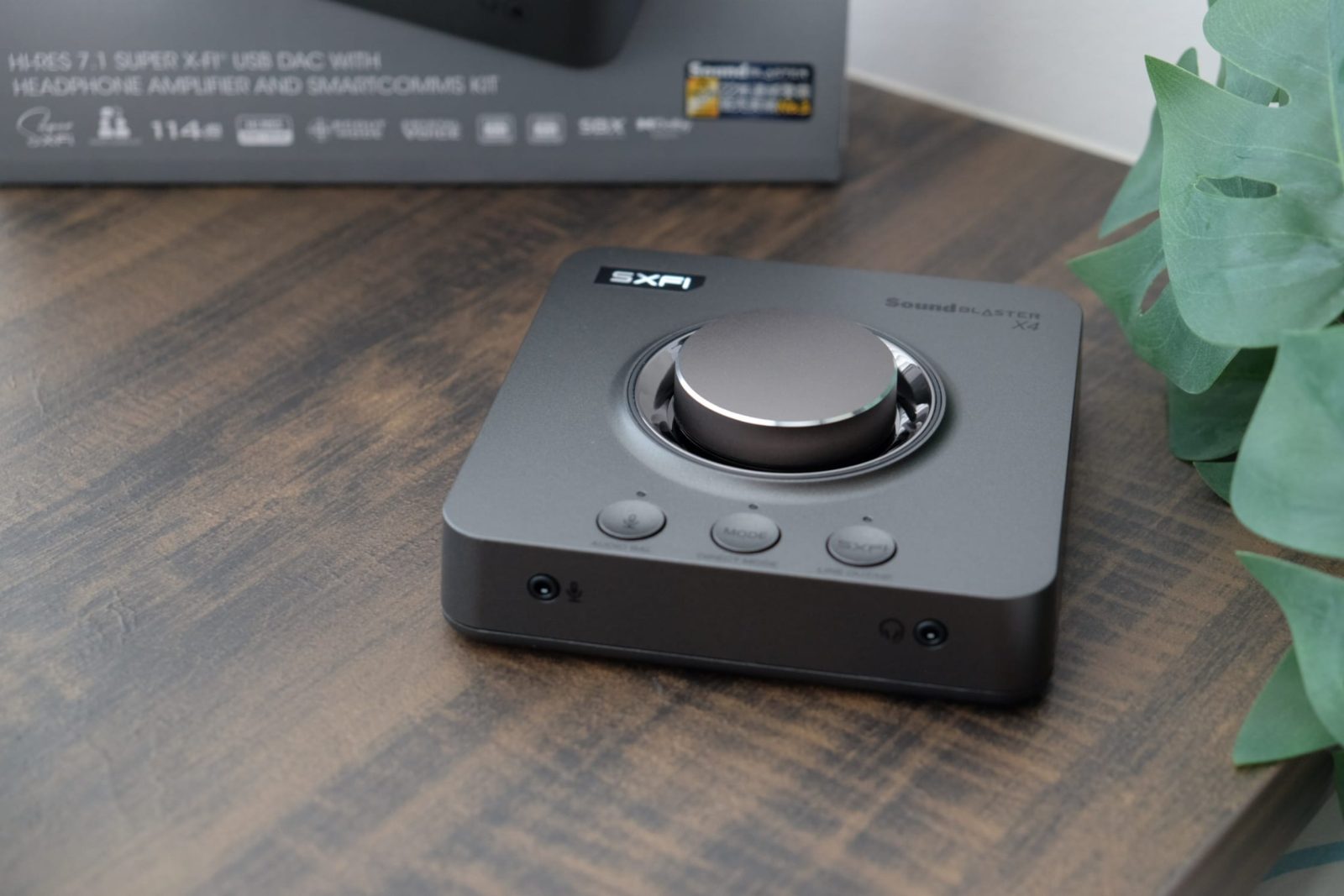








Leave a Reply